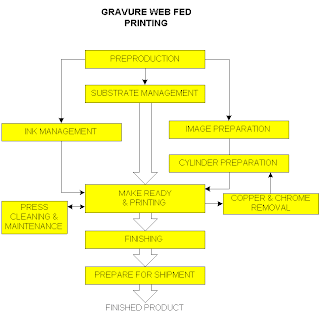Embossing is the process of creating a three-dimensional image or design in paper and other ductile materials.
It is typically accomplished with a combination of heat and pressure on the paper. This is achieved by using a metal die (female) usually made of brass and a counter die (male) that fit together and squeeze the fibers of the substrate. This pressure and a combination of heat "irons" while raising the level of the image higher than the substrate to make it smooth. In printing this is accomplished on a letterpress. The most common machines are the Kluge Letterpress and the Heidelberg Letterpress. The term "impressing" enables one to distinguish an image lowered into the surface of a material, in distinction to an image raised out of the surface of a material. Both are "embossing" per se.
The embossing process can be applied to textiles as non-wovens to get better finished products as sanitary napkins, diapers, tissue paper and others. In printing it is used as an accent process and can be used in conjunction with ink called colour register embossing or with no ink called blind embossing. It also can be used with foil stamping which when embossed with foil is known as combination stamping or combo stamping. All of these processes use a die and counter die. Most types of paper and boards can be embossed and there are no restrictions on size.
It is typically accomplished with a combination of heat and pressure on the paper. This is achieved by using a metal die (female) usually made of brass and a counter die (male) that fit together and squeeze the fibers of the substrate. This pressure and a combination of heat "irons" while raising the level of the image higher than the substrate to make it smooth. In printing this is accomplished on a letterpress. The most common machines are the Kluge Letterpress and the Heidelberg Letterpress. The term "impressing" enables one to distinguish an image lowered into the surface of a material, in distinction to an image raised out of the surface of a material. Both are "embossing" per se.
The embossing process can be applied to textiles as non-wovens to get better finished products as sanitary napkins, diapers, tissue paper and others. In printing it is used as an accent process and can be used in conjunction with ink called colour register embossing or with no ink called blind embossing. It also can be used with foil stamping which when embossed with foil is known as combination stamping or combo stamping. All of these processes use a die and counter die. Most types of paper and boards can be embossed and there are no restrictions on size.
